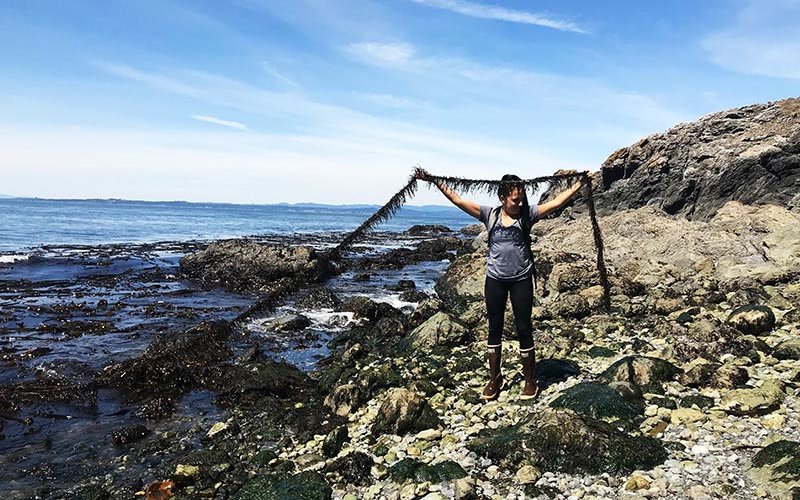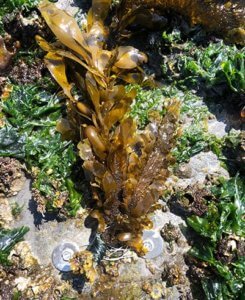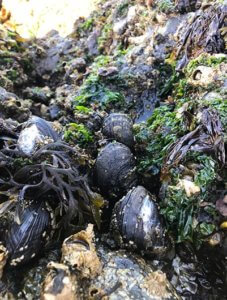
Angelina Zuelow is intrigued by feather boa kelp, a large brown seaweed so named because of its feathery, scarf-like appearance. It’s found in the rocky intertidal zone — the shoreline area between high tide and low tide. Zuelow is studying the effects of feather boa kelp on intertidal organisms and marine animals.
Classmate Georget Oraha is investigating how low tide temperatures affect mussels’ ability to remain attached to rocky surfaces.
For their thesis projects, the biology graduate students spent the summer immersed in marine research at the University of Washington’s Friday Harbor Laboratories on San Juan Island.
Both students are working on comparative research projects, in which they are assessing how environmental conditions — climate change and other factors — are affecting these ocean organisms in Southern California and in Washington. They are continuing their projects this fall semester and will collect data in both regions throughout the academic year.
Mussels and kelp play important roles in rocky intertidal zones and are known as “foundation species,” or species that play a role in other species’ ability to survive in the marine community, said Jennifer L. Burnaford, associate professor of biological science and the students’ research adviser.
“Both studies will provide critical information for scientists,” Burnaford shared. “We can’t make predictions about how communities will respond to climate change unless we understand the mechanisms behind the effects of these ecologically important species in the community. ”

Feather boa kelp is a large brown seaweed, found in the intertidal rocky zone from Alaska to Baja California.
Zuelow, who pointed out that feather boa kelp can grow more than 12 feet long in certain places, is examining the impacts it can have on marine animals and other seaweeds. She also is addressing how the marine community changes when the seaweed is added or removed.
“Identifying the effects of feather boa kelp in communities across the geographic range can be crucial for us to understand what other environmental factors are at play,” she said.
Oraha is studying how heat stress during low tide affects mussels’ ability to attach themselves to rocky surfaces. Heat stress is when an organism experiences temperatures that are too high, which can negatively affect metabolic rate, growth and reproduction, she explained.

Mussels are a marine bivalve (two shells) that have a dark elongated shell.
“A mussel’s ability to attach to rock surfaces is the key component to withstand the rocky shore environment. However, our changing climate may make it more challenging for mussels to attach themselves to the rock surfaces,” Oraha said. “High temperatures induce stress in mussels, making it easier to be ripped off the surface or eaten by predators. Losing mussels can ultimately lead to changes in the intertidal community.”
Depending on their presence or absence, mussels also can affect the diversity of the intertidal community, Oraha added.
“Mussels create and provide habitats for other organisms. Without mussels, our marine communities would lack its diversity and overall beauty.”
During their research experience at the world-renowned marine biology field station, the students worked long days in the field and lab, attended scientific seminars about a range of research topics, such as the effects of freshwater on sea star larvae and how fish avoid predatory whales.
“Our students also get the opportunity to interact daily with colleagues from around the world, which gives them new insights into their own research, and they learn about new fields of study and advanced degrees at many different schools,” Burnaford noted.
Zuelow, who aspires to earn a doctorate and pursue a career either in academia or at a federal agency, learned valuable lessons about overcoming obstacles when doing fieldwork at the ocean.
“You can’t control the weather or the tides, so you always need to plan and adapt to such conditions,” she said.
Oraha, who wants to teach biology at the community college level, shared that one of the key benefits was learning from others: “You get to engage with passionate scientists who share similar interests and are happy to guide you.”